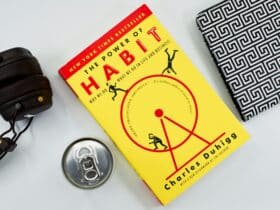Our thoughts gravitate toward problems. It’s natural, but it’s usually a waste of energy and a stress-inducer. Whether it’s a customer who hasn’t returned your call or a co-worker who is always slow in getting his reports to you, it’s the little things that tend to take over your thoughts.
One of my greatest worry reducing tools was taking notes before bed in order to organize my chaotic mind. I would write down every worry, idea or situation that left an impression on me. This helped me release any of my lingering feelings while also allowing me to watch my thought patterns.
I watched how a situation made me feel as I wrote it down. I noticed that 99% of my worries were just an exercise in self indulgence. There were times in the middle of the night when I believed that I had come up with an awesome solution to my problem, and I would write this idea down. The next morning I would look at the idea and 90% of the time I realized that it wasn’t as great as I thought it was.
Overthinking
I tend to over think things. For example I’ve redesigned my website multiple times. Each time there was always some snag in getting my site to look exactly the way that I wanted it to. My last redesign, a year ago, was keeping me up at night. I was trying to think of every possible angle to improve my site. I kept coming back to the same problems and trying the same old solutions.
All of these thoughts kept bouncing around my mind, but only a few of them ever really helped. I watched this pattern play out over and over again.
I needed to figure out a way to lock these worries up without letting them run loose.
Solution
Before I went to bed each night I emptied my mind of all the rushing thoughts by writing them down on a piece of paper. Afterwards, I put my pen and paper away in my night stand drawer. This helped me release any thoughts that could possibly hinder my relaxation before bed.
At the end of those notes, I would also write one positive affirmation to sleep on, such as, “my sleep is rejuvenating.”
As I slowly fell asleep, a thought would usually pop into my head. I felt the urge to write it down, but I remembered my lack of success with this in the past. Why wreck a good night’s sleep for one thought that might only have a 0% to 9% success rate? If I was gambling in Vegas I would never place a bet on such bad odds.
Instead, I refocused my thoughts on relaxing my muscles and soon I would be off, hanging out with the Sandman.
Results
I stopped letting my emotions drive my actions and started to think more logically about how each thought might help the “future me.” When I stopped hanging on to every thought, l began to enjoy just lying in bed and relaxing my body.
When I woke up in the morning, I was much more refreshed. I actually got a deep night’s sleep. The next morning I would look at my list that I had put in my drawer, and most of the time that thought that almost kept me up all night would pop back into my head. I remembered the thought, but I still got a good night’s sleep. It was a win-win process.
Present Day
A year later, I find I no longer have to go through this routine because I am able to do it subconsciously. Most nights I sleep like a log unless my dog wakes me up, barking at the little yapper next door.
The most important part of this plan is to do it every night. You have the ability to release your problems and enjoy more time with your family and yourself as well as improve your sleep with this easy technique.
One caveat: You’ve got to be totally honest with yourself, or it won’t work. When I first started this writing technique I was afraid to lay my worries all out on a piece of paper, but honesty is the only way you’ll stop worrying and start living happy.
What techniques do you use to calm your worries?
Karl Staib writes about unlocking and kicking open the door to working happy at his own blog: Work Happy Now! If you enjoyed this article, you may like to subscribe to his feed, follow him on Twitter or read one of his most popular articles, What do I do if I’m unhappy at Work?


















